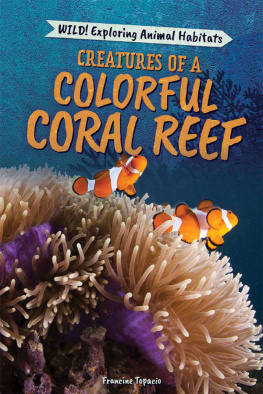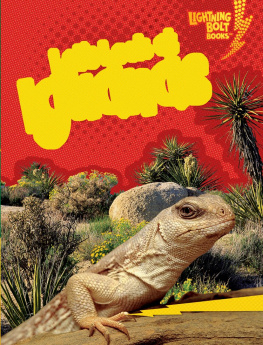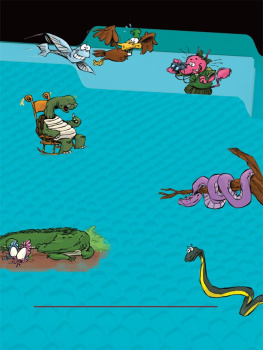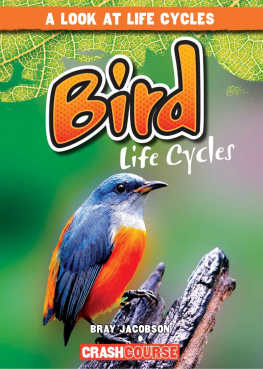
Please visit our website, www.enslow.com. For a free color catalog of all our high-quality books, call toll free 1-800-398-2504 or fax 1-877-980-4454.
Library of Congress Cataloging-in-Publication Data
Names: Tobler, Elise, 1970 author.
Title: Iguanas have an extra eye! / Elise Tobler.
Description: New York: Enslow Publishing, [2021] | Series: Reptiles rock!
| Includes index.
Identifiers: LCCN 2019050708 | ISBN 9781978518261 (library binding) | ISBN
9781978518247 (paperback) | ISBN 9781978518254 (6 Pack) | ISBN 9781978518278
(ebook)
Subjects: LCSH: IguanasJuvenile literature.
Classification: LCC QL666.L25 T63 2021 | DDC 597.95/42dc23
LC record available at https://lccn.loc.gov/2019050708
Published in 2021 by
Enslow Publishing
101 West 23rd Street, Suite #240
New York, NY 10011
Copyright 2021 Enslow Publishing
Designer: Laura Bowen
Editor: Elise Tobler
Photo credits: Cover, p. skibreck/iStock/Getty Images Plus/Getty Images.
Portions of this work were originally authored by Kathleen Connors and published as Iguanas. All new material this edition authored by Elise Tobler.
All rights reserved. No part of this book may be reproduced in any form without permission in writing from the publisher, except by a reviewer.
Printed in the United States of America
Some of the images in this book illustrate individuals who are models. The depictions do not imply actual situations or events.
CPSIA compliance information: Batch #BS20ENS: For further information contact Enslow Publishing, New York, New York, at 1-800-398-2504.

CONTENTS
Words in the glossary appear in bold type the first time they used in the text.
NICE TO MEET YOU
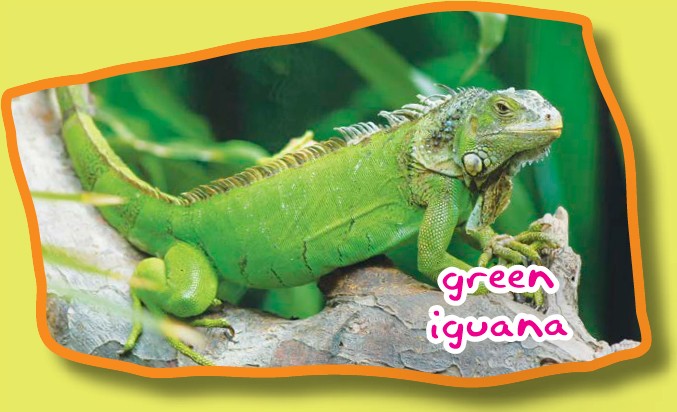
There are 35 species, or kinds, of iguana throughout the world, but the green iguana is the most common. Iguanas come in many shapes and colors, but they all have a spiky dorsal crest!
Adult iguanas are anywhere from 5 to 6 feet (1.5 to 1.8 m) in length, including their tail. Males tend to be larger than females, weighing up to 8 pounds (3.6 kg). Some green iguanas were found to weigh as much as 20 pounds (9 kg) and measure 6.6 feet (2 m) long!

GET THE FACTS!
More than half of an iguanas length is because of its tail. If an iguana is kept as a pet, the size of its cage does not affect the size it will grow to.
BIG AND COLORFUL
Iguanas come in many colors, from gray to blue to bright green. In 1986, pink iguanas were found in the Galpagos Islands. These pink iguanas are considered critically endangered, meaning there arent many of them left in the wild.
The blue iguana is one of the few naturally colored blue animals in the world. Blue iguanas used to live in great numbers on Grand Cayman Island, but by dogs have greatly reduced their population.

GET THE FACTS!
Iguanas only change color under certain conditions. Stress can make an iguana turn dark green or black!
SPINES AND SCALES
Take a close look at an iguana, and you will see how different its skin is! Like many other reptiles, iguanas are covered in rough skin called . This skin makes it hard for predators to bite iguanas. It also allows iguanas to take in sunlight, which helps keep them warm.
See the big, round scale beneath the iguanas eye? Thats called a subtympanic shield, and it sits beneath the iguanas ear hole. This shield doesnt do anything fancy, but it may fool predators into thinking its another eye watching them.

GET THE FACTS!
Iguanas have a ridge of skin called a on their chin.
THE EYES HAVE IT
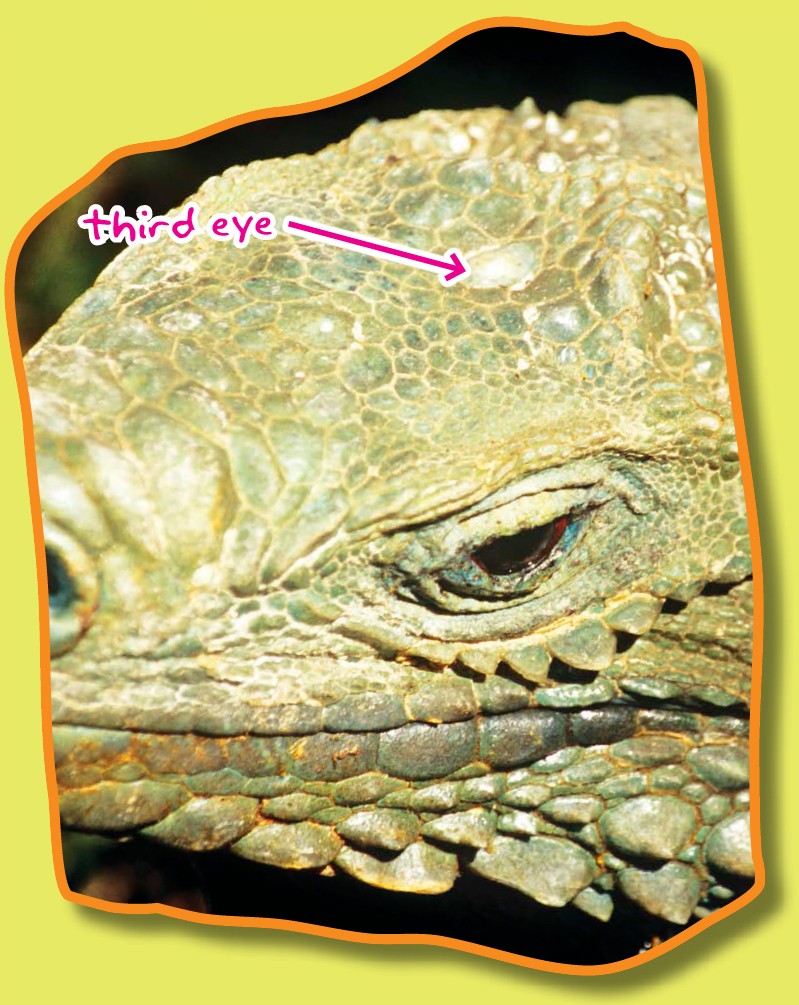
Iguanas have a third eye on the top of their head! It can only detect changes in light and dark. It does not see like a regular eye does. But it can help iguanas avoid predators because it allows them to sense birds flying overhead.
This body part is called a parietal eye, and its attached to the walls of iguanas scales. Some reptiles, salamanders, frogs, certain bony fish, sharks, and eels have these. Other reptiles like turtles and crocodiles do not have this third eye.
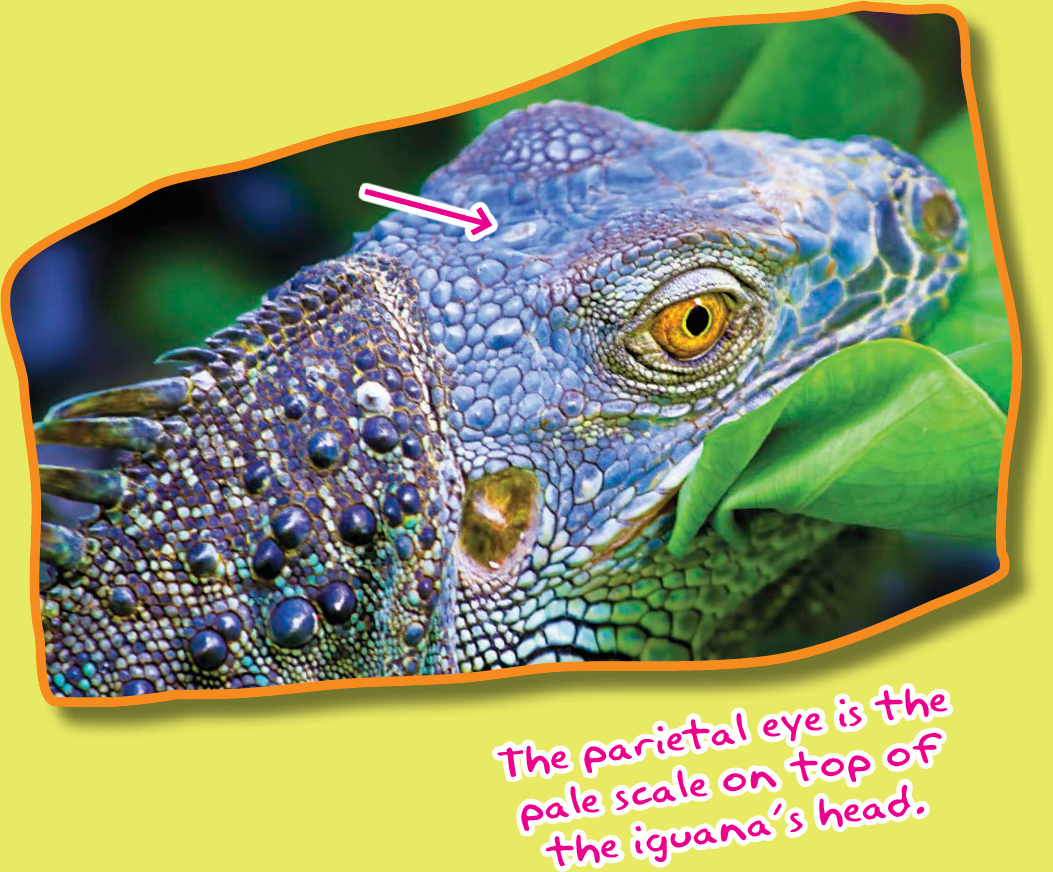
GET THE FACTS!
The parietal eye is photoreceptive, which means it can tell when light changes. When a bird flies between the iguana and the sun, the light flickers. This tells the iguana something is up there, and it knows to hide.
TAIL ME MORE
When an iguana is under attack from a predator, its tail can be used like a whip to strike the predator and allow the iguana to escape. Given the length of an iguanas tail (sometimes longer than its whole body!), this whip can be painful to predators.
GET THE FACTS!
When a lizard drops its tail, the tail can grow back, but it will often be a different color than the body, since its new.
Like those of some other reptiles, an iguanas tail can fall off. This can be helpful when they are trying to escape from predators. It also helps them to avoid being caught in doors or on tree branches. When the tail comes off, it doesnt hurt the iguana. And, in fact, they can regrow their tails!
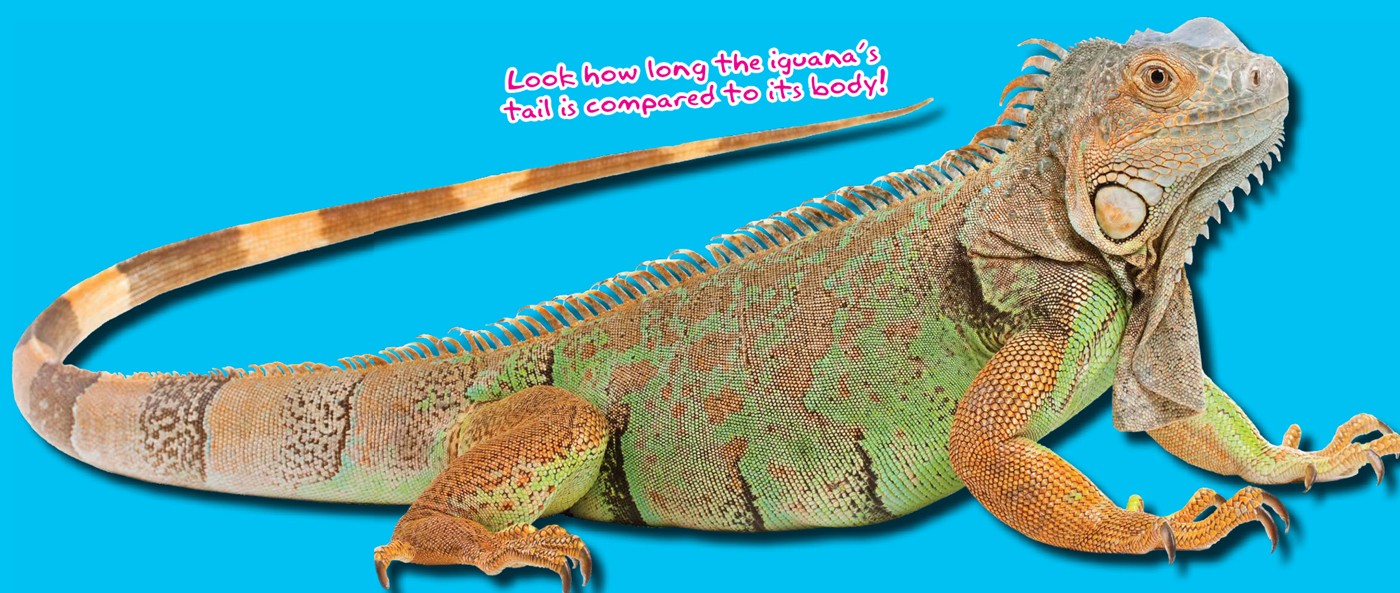
LUNCHTIME!
Iguanas are herbivores. That means they eat plants and fruits but not meat. Unlike other reptiles, iguanas dont eat bugs. They like tree leaves, flowers, and even cactus. Their mouth and teeth are specially to eating fruits and vegetables.
If youre keeping an iguana as a pet, be sure to check with the pet store to see what kind of food it likes best. Never feed iguanas crickets or worms, as this wont be what they like. But giving them too many plants can also be bad for them.
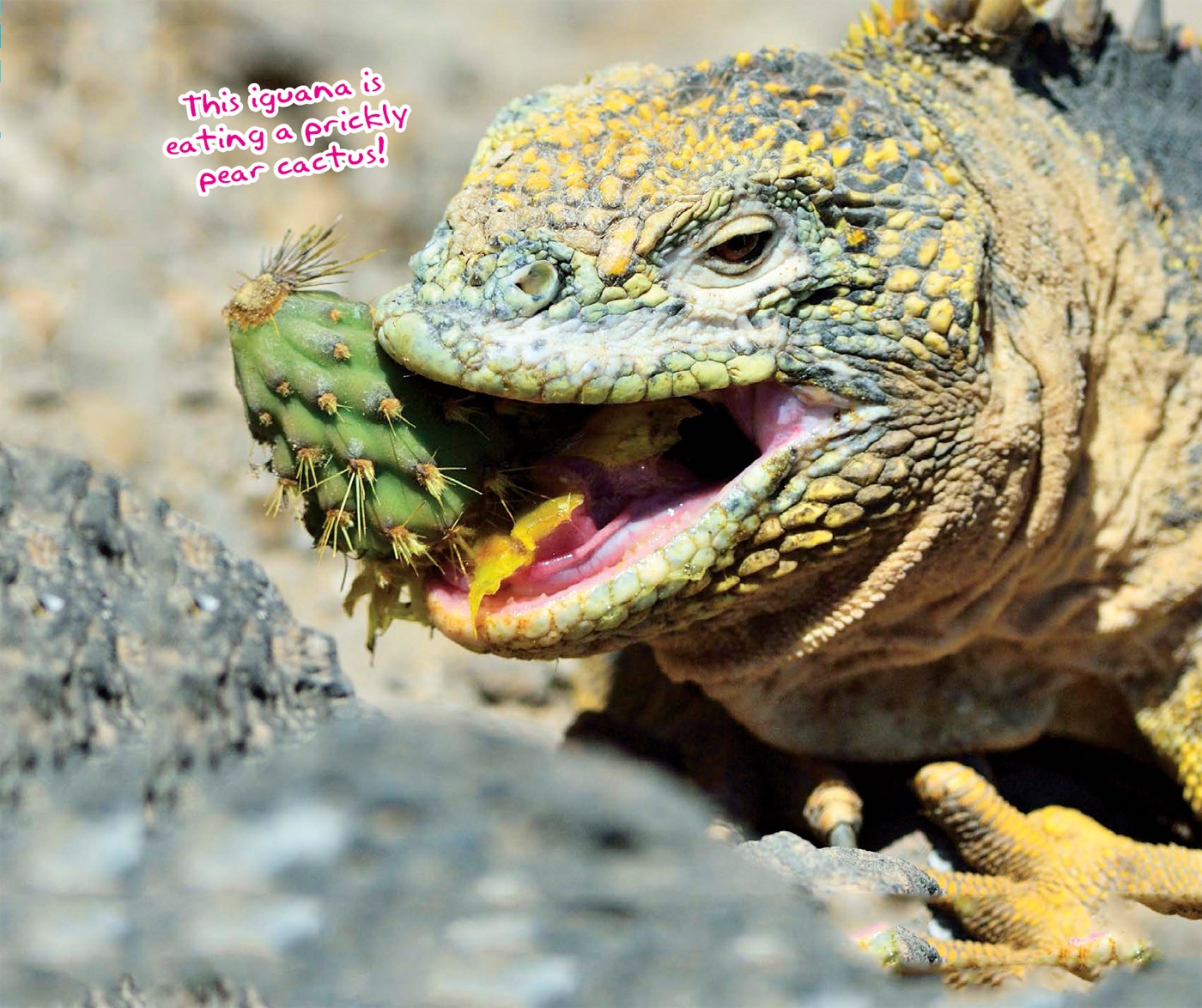
GET THE FACTS!
Sometimes, iguanas will eat small insects and eggs and other non-plant matter, even though this isnt thought to be good for them. You should never feed them avocados because they are toxic to iguanas!
WHERE IN THE WORLD?
Iguana habitats are found in all of the Americas. Two kinds of iguana live on the Galpagos Islands, and three different species are found in Fiji. The Madagascar iguana lives on the island its named for, which is off the southeastern coast of Africa.
Depending on the kind of iguana, it may spend more time in trees than on the ground. Some, like the green iguana, make their home in the rain forest. Other kinds of iguana prefer to live in the desert heat of places like Nevada, Utah, and Arizona.






